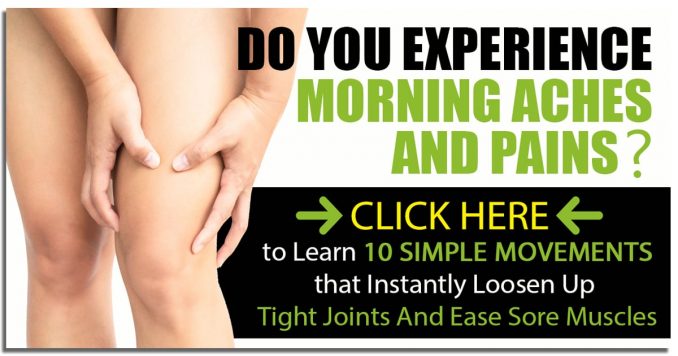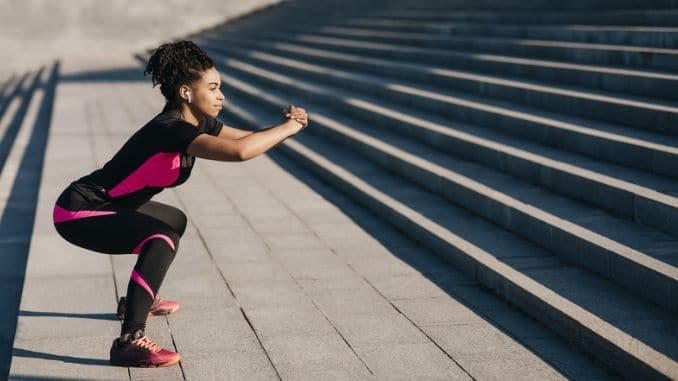
Once the Spring and Summer weather arrives, it’s natural to want to spend more time outside, enjoying the fresh air and different scenery. But have you thought about taking your workout outside too?
If you are close to a park, soccer field, outdoor stadium, or running trail, with a little ingenuity, you can spice up your workout and get some much-needed Vitamin D. Look for ways to incorporate your environment into your workout for some added fun and variety. A park bench or children’s playground can be the perfect workout accessory, and a set of stairs can be used to create a challenging strengthening routine that gets your blood pumping. In today’s workout, we have shared four lower body exercises that can be done from your local staircase or bleachers. Not only do these exercises tone and strengthen, they also increase your heart rate. So, grab a friend, your running shoes, and some sunblock and give this outdoor workout a try.
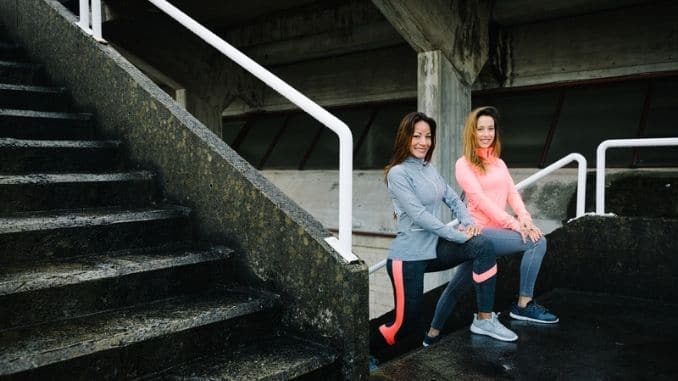
1. Deep Squats
Deep Squats are a great way to increase your hip and knee mobility while strengthening your quads, glutes, and core muscles. They also help increase knee, hip, and core stability, which is important for maintaining your balance, especially as you age. Keep in mind, although compressive forces on the meniscus increase as your squat depth increases, if you don’t have any prior injury, there is no evidence that squatting deep will cause injury to these structures. Just remember to listen to your body and only squat as deeply as you feel comfortable. Try to progress the depth of your squats over time.
Begin in an upright standing position with your feet approximately shoulder-width apart. Gradually widen your stance until you feel the most stable. The wider your stance, the greater the emphasis placed on your glutes, and the less stress is placed on your quads. Adjust your stance, depending on which muscles you want to challenge more. Keep your core tight by drawing your belly button in towards your spine. Bend your knees and hinge from your hips to lower your seat downward. Keep your weight in your heels as you shift your hips back and lower down as far as is comfortable. Keep a neutral or slightly extended spine. Don’t hunch or curl your shoulders. Slowly raise to a standing position and repeat the movement.
It’s important to keep your heels in contact with the ground throughout the entire range of movement. Ankle mobility is a key to maintaining form and stability. There are various definitions of a deep squat, but it is generally accepted that a deep squat consists of a knee angle greater than 120 degrees. This means the crease in your hip should drop below your knees and your seat nearly touches the ground.
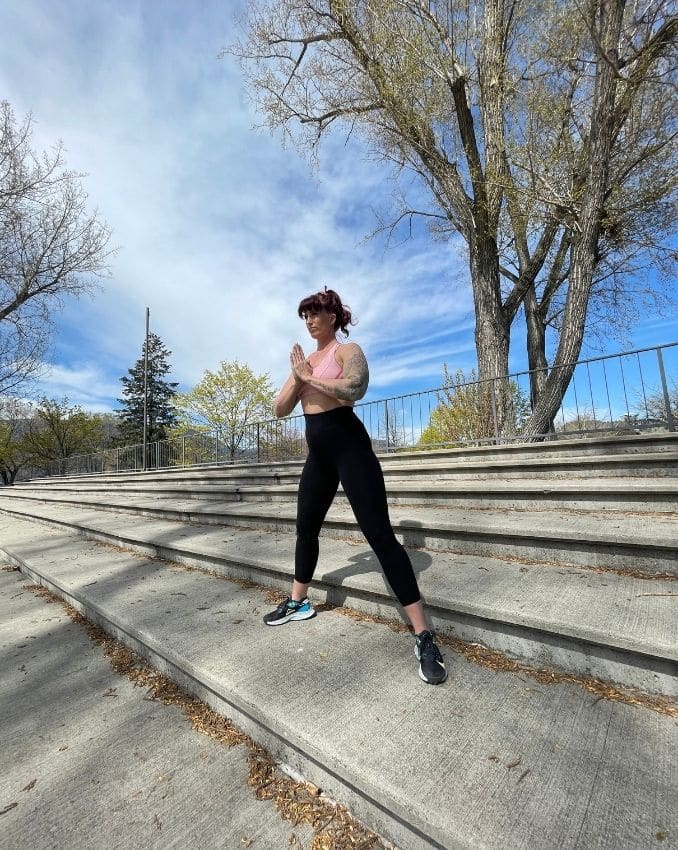 |
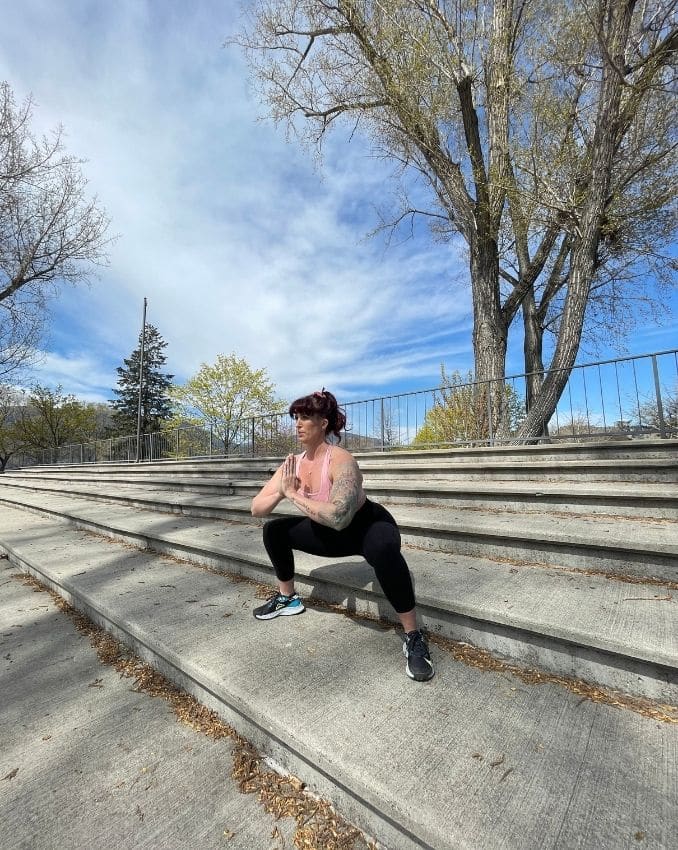 |
Perform 1 set of 10 repetitions.
2. Lateral Leg Lifts
The lateral step-up with a leg lift promotes unilateral leg strengthening for better balance and reduces the weaknesses that limit bilateral leg strength. This exercise also improves hip stability.
Begin in an upright standing position beside the stair or other stable elevated surface. Raise one foot and step onto the stair. Push up onto your elevated leg, raising your opposite leg out to the side at the top position. Step down to the lower stair with one foot, bend your knees and hinge from your hips to lower into a shallow squat. Raise back up to a standing position, pushing off from the semi-squat position for momentum. Repeat the sequence of movements. The higher the step, the more challenging this exercise will be. To make this exercise easier, go through the lateral leg raise movement without stepping up onto an elevated surface.
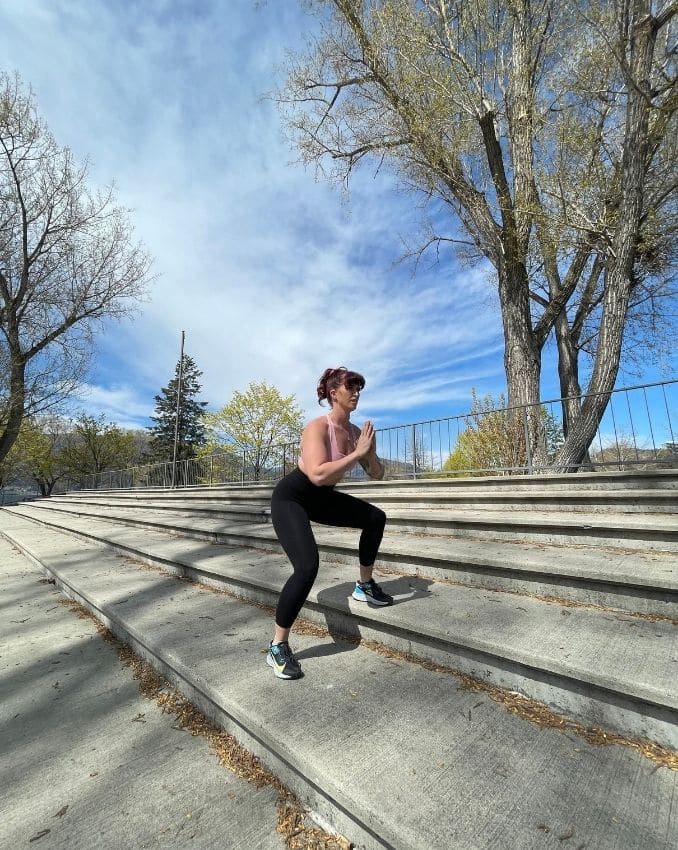 |
 |
Perform 1 set of 5 repetitions on each side.
3. Step Ups
Step-Ups are a simple yet intensive exercise that combines the motion of lunging with stair climbing. Incorporating both the glutes and hamstrings, this exercise is sure to increase your heart rate while simultaneously challenging your core stability. Begin in an upright standing position in front of the stair. Step onto the stair with one foot. Follow this movement with your other leg, lifting your knee to hip height before tapping your toes on the step. Step back down to the lower step and repeat the sequence of movements. The higher the step, the more challenging this exercise will be. Progress to a higher surface once you gain strength and confidence with this exercise.
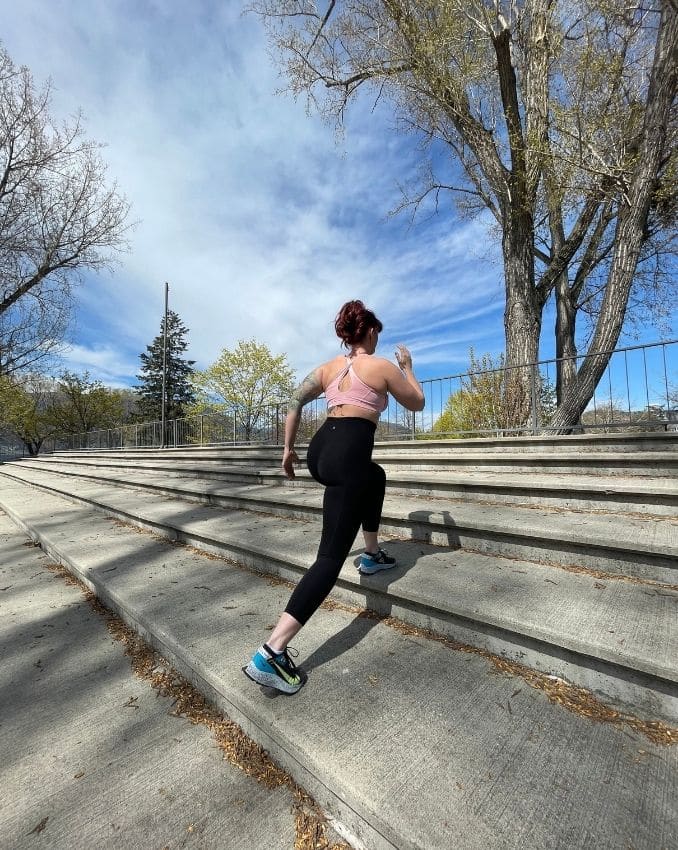 |
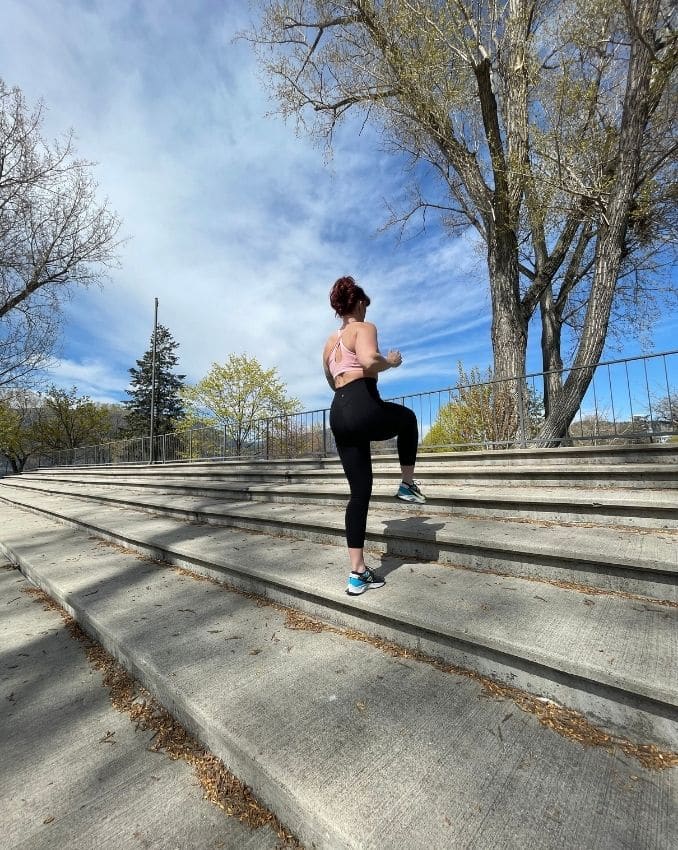 |
Perform 1 set of 5 repetitions on each side.
4. Single Leg Elevated Squat
Single Leg Elevated Squats have multiple benefits. From strengthening the quads and glutes to increasing mobility through the hip flexors, this one exercise quickly engages several key muscle groups.
Begin in an upright standing position beside the stair. Step laterally onto the step with one foot. Engage your core, bend both knees, and hinge from your hips to lower your seat into a squat position. Try to keep your weight in your heels and your hips even. Straighten your legs to return to the upright standing position and repeat the movement. The wider your stance, the more challenging for your glutes, and the less emphasis is placed on your quad muscles. The higher the step, the more challenging the exercise.
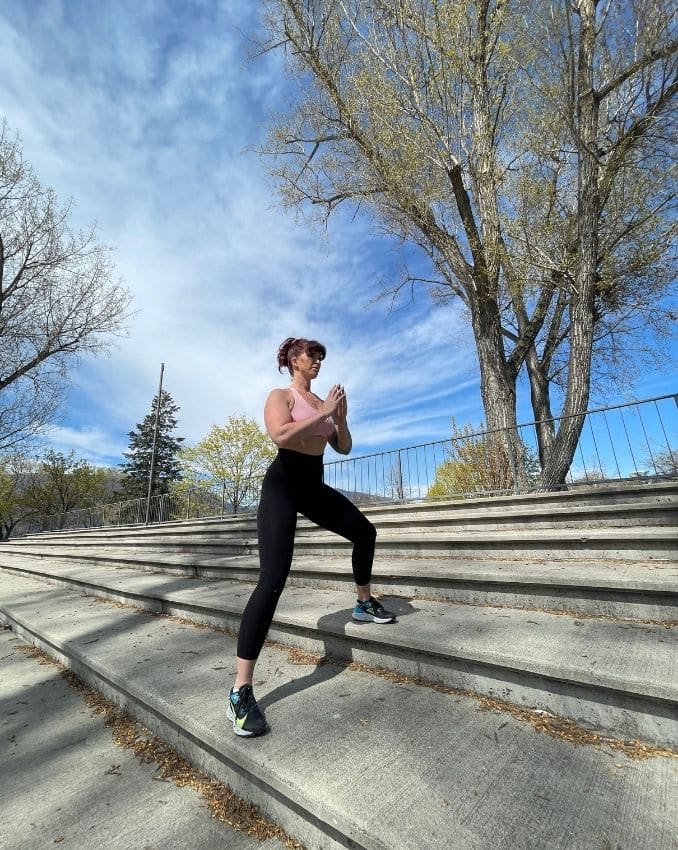 |
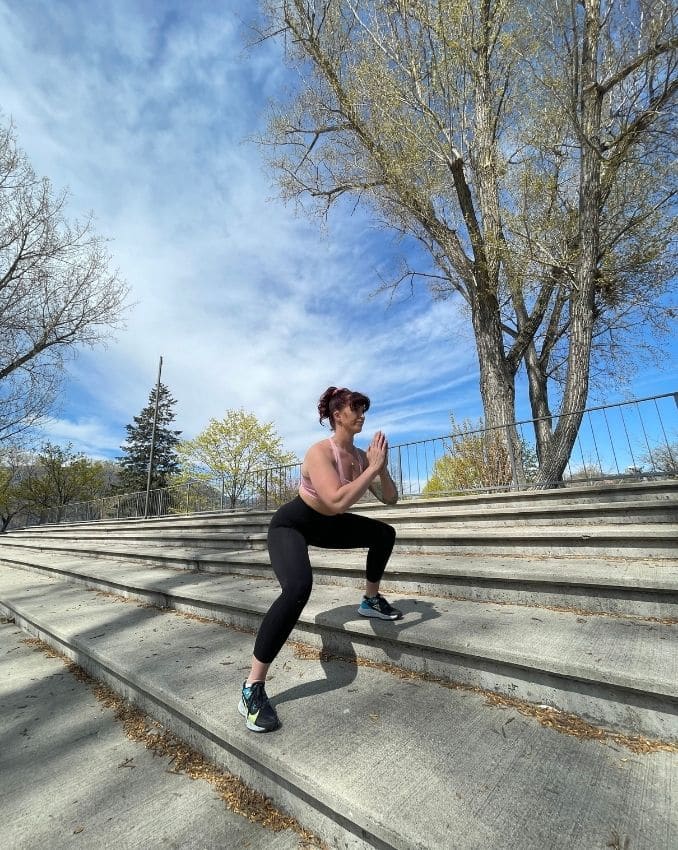 |
Your local park or stadium is the ideal place to enjoy your next workout. It just takes a bit of creativity and a little motivation to create an impactful workout that works every part of your body. The exercises we shared today focus on the lower body, including the hips, glutes, quads, and calves, but it is just as easy to use your environment to create a challenging upper body or core workout. So, get outside and find some unique ways to challenge your muscles and get your blood pumping. When exercising outside, remember to prepare for the weather, as a warmer climate can cause you to dehydrate more easily. Be sure to pack extra water to keep feeling your best.
Don’t let sore muscles stop you from doing what you love. Click here to learn how to eliminate morning aches and pains.

